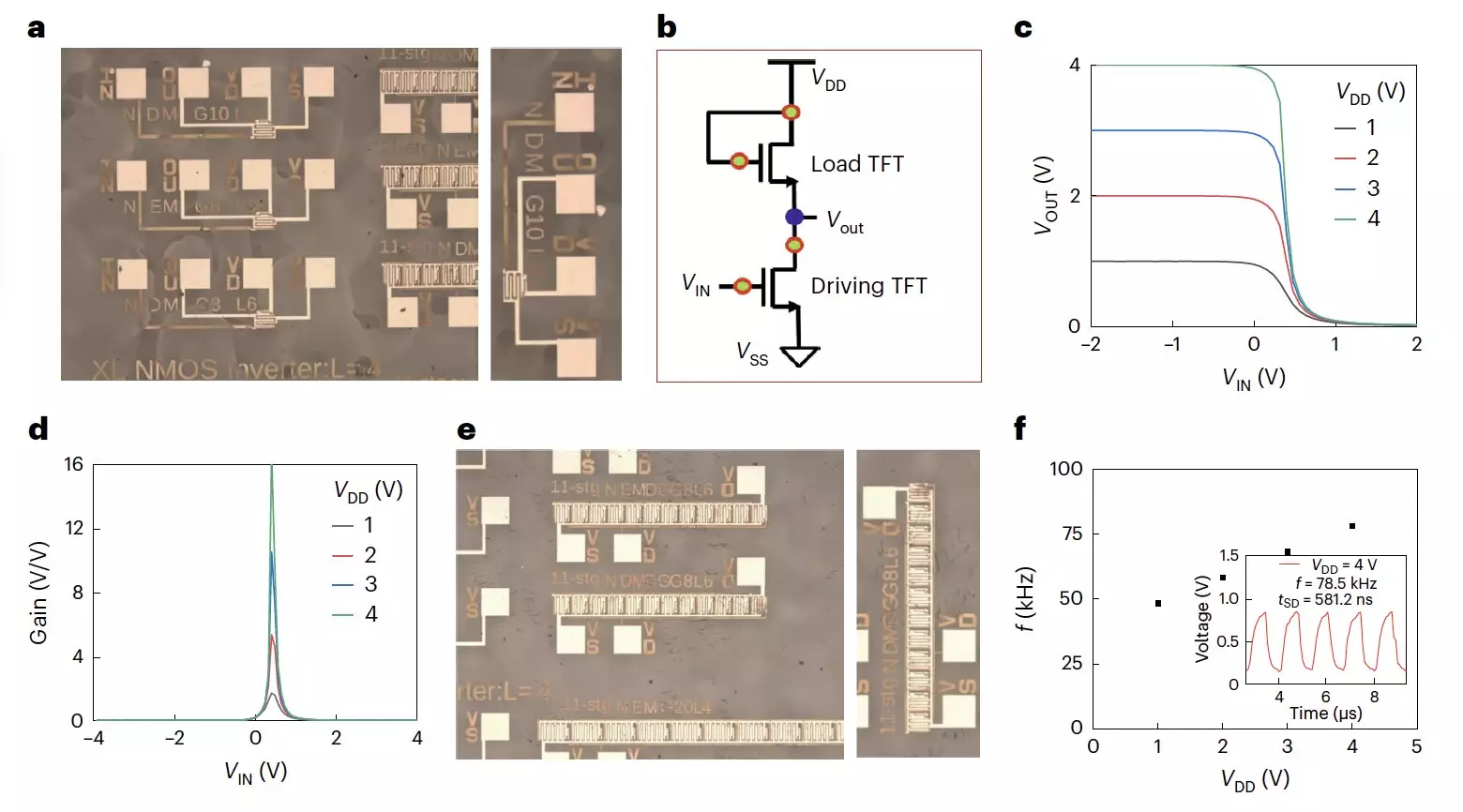Metal halide perovskites have become a subject of growing interest due to their remarkable optoelectronic properties, making them ideal candidates for the development of cost-effective thin-film transistors. While tin (Sn) halide perovskites have shown great promise in the fabrication of p-type transistors, with field-effect hole mobilities (μh) exceeding 70 cm2 V˗1 s˗1, the same cannot be said for n-type transistors. This limitation has hindered the advancement of complementary logic circuits that require both p-type and n-type transistors to perform equally well.
The existing literature has highlighted the challenges in developing n-type transistors based on tin halide perovskites due to their inherent properties. Lead halide perovskites, on the other hand, have shown potential for n-type transistors. However, the presence of ionic defects in lead halide perovskites has limited the electron mobilities to a range of only 3-4 cm2 V˗1 s˗1. This deficiency has made it difficult to create efficient all-perovskite logic circuits.
Researchers from the National Centre for Scientific Research Demokritos, École Polytechnique Fédérale de Lausanne (EPFL), the Indian Institute of Technology, and other institutions worldwide have introduced a new strategy to address the limitations of n-type transistors based on metal halide perovskites. Their innovative approach, outlined in a recent paper published in Nature Electronics, involved using formamidinium lead iodide (FAPbI3) perovskite to fabricate n-type transistors with significantly improved field-effect mobilities of up to 33 cm2 V˗1 s˗1.
To enhance the performance of their n-type transistors, the research team incorporated a methylammonium chloride (MACI) additive. This additive played a crucial role in regulating strain in FAPbI3, as well as improving its overall properties. By utilizing this approach, the researchers were able to stabilize the alpha phase of the perovskite, balance strain, improve surface morphology, crystallinity, and orientation, and create low-defect perovskite-dielectric interfaces.
Initial tests of the n-type transistors designed by the team yielded highly promising results, including good electron mobilities, minimal hysteresis, and high operational stability under both negative and positive bias stress. These positive outcomes have enabled the researchers to fabricate all-perovskite unipolar inverters and 11-stage ring oscillators, demonstrating the potential for integrating metal halide perovskite transistors into various electronic components.
The innovative strategies employed by researchers to overcome the challenges associated with n-type transistors based on metal halide perovskites offer new possibilities for the development of highly efficient and cost-effective integrated circuits. As further testing and integration of these n-type transistors into other electronic devices continue, the future of metal halide perovskite-based transistors appears promising, paving the way for advancements in the field of optoelectronics.


Leave a Reply